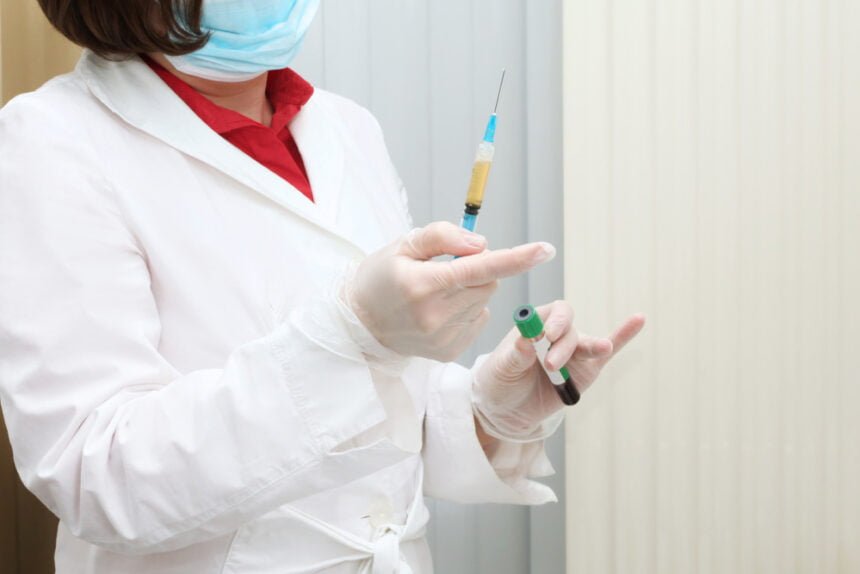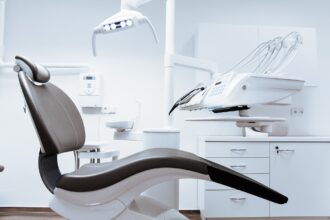Many people dread going to the dentist and feel nervous and anxious about the procedures they may need. This anxiety can lead them to avoid or delay their dental appointments, which can worsen their oral health and cause more problems in the future. However, modern dentistry has developed advanced techniques to address precise, pain-free, and faster-healing dental procedures using laser technology.
Laser dentistry can make dental visits more comfortable and less stressful for many patients, especially those who have dental anxiety or phobia. Unlike traditional techniques that often require anesthesia, laser dentistry can perform many procedures without numbing the area, reducing the risk of complications and side effects.
Moreover, laser dentistry can prevent infection and inflammation, as lasers can sterilize and seal the treated area, improving the healing process and the treatment outcome. If you’re looking for a dental clinic that offers laser dentistry, you can visit Mercato Dental Centre or another clinic near you for experienced and friendly care.
The Evolution Of Lasers In Dentistry
The integration of laser technology into dentistry has transformed the practice of minimally invasive dentistry (MID) since the 1960s. Early pioneers recognized the potential of lasers to revolutionize dental care and explored their possibilities. Initial experiments with ruby lasers demonstrated their ability to vaporize tooth enamel. Still, challenges arose due to the continuous wave nature of these lasers, which could damage the delicate pulp inside the tooth.
The introduction of pulsed lasers in the 1970s marked a significant turning point, as their short, controlled bursts of energy minimized thermal damage and enabled more precise tissue interaction. This breakthrough paved the way for the development of versatile CO2 lasers in the 1980s and more precise erbium: YAG (yttrium aluminum garnet). Er: YAG lasers became prominent in the 2000s, further expanding the scope of laser dentistry.
Advantages Of Laser Dentistry
The integration of laser technology into dentistry has ushered in a new era of patient care, offering many advantages. Laser dentistry’s impact extends beyond patient comfort and encompasses many benefits that enhance treatment outcomes and reduce recovery times.
- Precision and minimal tissue damage – Traditional dental techniques, while effective, often involve mechanical devices that can cause discomfort and damage surrounding healthy tissues. The laser’s focused beam of light precisely targets the treatment area, minimizing trauma and preserving healthy tooth structure.
- Reduced pain and discomfort – The controlled energy delivery of lasers often eliminates the need for anesthesia, making dental visits less anxiety-provoking and more pleasant for patients. This feature is particularly advantageous for patients with dentophobia or those sensitive to local anesthetics.
- Faster healing and reduced recovery time – Laser’s ability to seal nerve endings and blood vessels can stop bleeding, promote faster healing, and reduce recovery time. This property can minimize inflammation and promote tissue regeneration. As a result, patients can resume their daily routines with minimal disruption.
- Minimized need for sutures – Laser surgery can precisely coagulate the blood vessels and the nerve endings of the tissues, which means that sutures are unnecessary. This approach can reduce the pain and the damage to the location after the procedure.
These are some of the merits of laser dentistry that can make dental treatments more comfortable, precise, and effective for both patients and dentists.
Applications Of Laser Dentistry In Minimally Invasive Dentistry
Laser dentistry’s versatility extends to a wide range of applications, each tailored to address specific dental concerns while adhering to the principles of MID.
- Cavity preparation: Preserving healthy tooth structure – Traditional cavity preparation often involves drilling, which can remove healthy tooth structure along with decayed material. Laser dentistry utilizes a focused beam of light to selectively remove decayed tooth enamel and dentin while preserving the surrounding healthy area.
- Crown and bridge preparation: Precision shaping for restorations – Placing crowns and bridges requires accurate shaping of the tooth structure to ensure a proper fit and optimal repair. Laser dentistry offers unparalleled precision, enabling dentists to reshape the tooth without damaging the surrounding tissues.
- Soft tissue surgery: Easing discomfort and fostering healing – In procedures such as gingivectomy, frenectomy, and crown lengthening, lasers can accurately remove and reshape soft tissue with minimal bleeding, reducing post-procedural discomfort and promoting faster healing.
- Biostimulation: Accelerating recovery and regeneration – Laser dentistry extends beyond tissue removal to encompass Biostimulation, a process that utilizes laser energy to stimulate cellular activity and promote healing. This technique is particularly beneficial in periodontal therapy and implant placement, as it accelerates wound healing and bone regeneration, leading to improved long-term outcomes.
- Cosmetic dentistry: Enhancing aesthetics with precision – Laser technology provides a precise and expedited solution for removing superficial stains and discolorations, swiftly restoring teeth to their natural whiteness. In comparison to home remedies, it offers a faster approach. Additionally, dentists utilize lasers to reshape tooth enamel through cosmetic contouring, enhancing the overall aesthetic appeal of the smile.
With its precise and minimally invasive approach across various procedures, laser dentistry has transformed patient care, elevating comfort levels and enhancing treatment outcomes. As laser technology progresses, the future of dental care stands on the brink of expansion, promising to revolutionize the practice even further.
The Challenges And Limitations Of Laser Dentistry
While laser dentistry offers many benefits, it is essential to acknowledge its challenges and limitations. A balanced perspective ensures that patients make informed decisions about their oral health.
- Cost and accessibility – Laser devices are expensive to purchase and maintain, which can increase the cost of dental treatments and limit access to laser dentistry for some patients and dentists.
- Compatibility – Certain laser equipment may not be compatible with specific dental materials, including metal fillings, crowns, or bridges. This incompatibility can restrict their use in procedures that involve the removal of existing restorations.
- Potential for thermal damage – If not used properly, lasers can cause thermal damage to surrounding tissues. This risk is particularly relevant when treating areas close to delicate structures, such as nerves and blood vessels.
- Limited Range of applications – Laser dentistry is not a panacea for all dental procedures. While it excels in certain areas, such as soft tissue surgery and cavity preparation, it may not be suitable for all methods.
Despite these challenges and limitations, laser dentistry remains a valuable tool in the dental armamentarium. As technology advances and training programs expand, laser dentistry is poised to play an increasingly prominent role in the future of dental care.
Conclusion
Laser dentistry is a modern and innovative approach to dental care that can provide many benefits over conventional methods. However, its challenges and limitations may affect its availability, affordability, and suitability for some patients and procedures. Contact your trusted dental care provider today if you’re interested in learning more or want to experience it firsthand.









